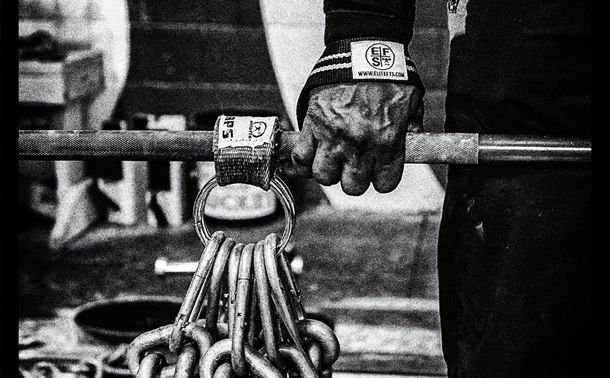
NOTE: This is book sized Blog post packed full of content. Unless you have extra time I suggest you bookmark, save or share it somewhere you can come back to when you do get time. The video is taken from a one-hour seminar on this topic and the text is designed to support and expand the video content. Combined this is over two hours of digestible content - that will help any strength training program.
At a busy gym, I watched a young lifter muster up all his courage to approach a world record-holding squatter to ask advice on how to build his squat. The self-absorbed “champion” mumbled out the following advice:
“I don’t know why everyone makes this so complicated. All you have to do is squat down and stand back up.”
While this simplistic approach may have worked to get the record-holder his brief grasp of notoriety, it did nothing for the hungry teenager trying to get his squat from three plates a side to four or more. I can also confidently state that the record-holder may have gone on to do more had he put more thinking into what it takes to improve a lift. The squat is not just standing up with a weight. It is perfecting technique, correctly programming your training, and choosing the proper supplemental exercises to make your body capable of much more than it is now.
Supplemental and accessory exercises are the most misunderstood parts of strength training programming. Actually “misunderstood” is being generous – most guys screw it up beyond recognition.
Supplemental Training 101
Regardless if you train using Block Methods, Western Linear Methods, Undulating, Concurrent, or any another other type of training method, supplemental movements are usually involved. I’d go as far as to say that even those who don’t use supplemental movements per set still train the main lifts in both programmed and supplemental ways. Even if all a lifter does to develop their squat are squats, rarely will they just work up to their work sets of the squat and then call it a day. They’ll typically do a few variations of the movement such as walkouts, pause squats, and use a few different stances. Point being, in one way or another, supplemental and accessory work is a part of all training.
First, let’s get our terminology in check. Powerlifting is judged solely by your performance in the squat, deadlift, and bench press. These are your main lifts, your main objective, and your sport. It’s not unlike how a track athlete is judged by his or her time or distance in their respected event. So with the squat, deadlift, and bench press at the top of the food chain, the supplemental and accessory lifts are intended to increase those lifts, or what we’ll call the “Strength of the Sport Skill.” With that in mind, there are two schools of thought:
1. Train the main lift to develop the main lift. “To get a bigger squat, you gotta squat. To get a bigger deadlift, you gotta pull. To get a better bench press, you gotta bench.” The big lifts are the focus and appear throughout the training cycle. What changes is the volume and intensity.
2. Find the weak point in the lift and strengthen it. This in turn will strengthen the big lift. The main lift may not even a part of the routine, but improving it is always the objective.
Both approaches are right. However, even those who live by #1 still do other exercises -- they just keep their focus on the big lift. And guys who follow approach #2 still do the main lifts too.
NOTE: Both methods agree that the technical aspects of the competitive lifts must be trained, even those who fall more in line with #2. Fact is, many times the lifts and techniques used to address weak points are being used to correct technique as much as developing strength.
Periodization Problems
But most periodization models only target the main lifts. The supplemental and accessory training gets a throwaway recommendation like “3 x 10-15” or nothing at all. I’ve seen coaches and lifters spend hours creating elaborate schemes to train and cycle the competitive lifts and almost no thought on the supplemental and accessory movements whatsoever.
From what I see these movements are being selected based on what they see their favorite lifter doing. These movements work much the same as business fads. Years back it was the close-grip bench press and stiff-leg deadlift, then the JM press and good morning came in vogue.
It would be much more effective to make choices based on your own training, strengths, and weaknesses. To make this process easier to follow, let’s step back and move forward at the same time. Here’s a template explaining how I define and organize it all myself:
The Lifting Template
Competitive Lifts: Squat, Bench Press, Deadlift
Goal: To increase Competitive Max (CM)
Main Lifts: These can be known as the builders, core lifts, basic lifts, etc. These are the lifts the entire program is built around. For most programs, it will be the squat, bench press, and deadlift, in others special exercises in the form of max effort movements may be used.
Finally, for those who aren’t competitive lifters, these lifts can be anything the lifter or coach feels has the highest dynamic correspondence (carry over) to the competitive lifts. To illustrate the last example, if I was working with a coach on how to better his/her own training philosophy, I’d first ask what 3-5 movements they feel carry over the most to the sport they’re working with. Whatever their answer is would replace the squat, bench, and deadlift as the competitive lifts.
Supplemental Lifts: These are movements we feel or know will make the main lifts either stronger or better from a technical standpoint. There may be 1-2 of these per session.
Accessories: These are the lifts that will support, balance, and help build the supplemental lifts.
Rehab/ Prehab: While I can’t stand this term it’s what most will understand. These are those things we need to do to stay healthy, recovering well, and keeping our conditioning in line with the goals of the program.
Personally, I never based my training off my bench press CM because I used a bench shirt and my carry over could be (and was) all over the map. I’ve had meets where I benched 610 knowing full well I couldn’t bench 450 raw. I had other meets where I benched 540 raw in training and missed 575 at the meet with a shirt. My average carryover was around 10% so I used this as a general guideline. In my later years, I did add technical work with the shirt. This wasn’t an easy thing to do (still isn’t) and is best left for another article. What I did know is without fail my floor press was always 90% of my best raw bench, my close-grip incline press 65% of my best raw bench, and my 2-board press was 92% of my best raw bench. These were also the movements I knew that when they went up, my bench went up.
These were my builders (main Lifts). As such they were part of my max effort rotation and the closer to the meet, the more they rotated in. Once these movements were trained I’d move onto my supplementary movements. These were selected based on what I knew would build my floor press, 2-board press, and close-grip incline. Since I already knew those movements had the greatest correspondence to my competitive lifts, why would I not train to make them better?
For me these were JM presses on the floor with weight and chains (60% bar weight and then keep adding chain for two max sets of 5 reps), rolling dumbbell extensions on the floor, elbows-out triceps extensions (lying back, upper back braced on GHR pad), and stability ball dumbbell presses with my hips low. I rotated these movements in and out to keep from going stale on any of them. After the supplemental movements, I’d look at what’s been done and determine what I needed to do to balance this work out, the accessory movements.
Considering all the pressing and extensions I was doing I’d choose movements such as hammer curls, face pulls, reverse-band pulldowns, chest-supported rows, and some light shoulder work. These were also rotated based on how I felt and how my training was going.
Finally, there was the shit I had to do. With pre-existing pec and shoulder issues, I did a lot of very high-rep reverse band presses (weight zero on chest and reps of 100). I also did internal and external shoulder rotation movements. While the damage was done, these were things I had to do to keep things from getting even worse -- or at least slowing down when they would get worse. When it was all said and done there were 4-5 movements.
Sample Session #1
MAIN LIFT: Floor Press – work up to 1 and 3-rep max – Goal: 4 total reps over 90% spread over 2-3 sets)
SUPPLEMENTAL: JM floor press with chains – work up to 60% of my perceived max (pm) for the JM press on the floor (what I think I could’ve done for one rep). At this point start adding one chain per side for triples until I could no longer do 3 reps.
ACCESSORY: Hammer curls – 3 sets x 10 reps, Face Pulls – 3 sets x 10 reps
Rehab/ Prehab: Upper body sled work for shoulders (no eccentric) – 4 trips x 20 reps
Keep in mind I trained using a concurrent method so here’s another example using a different method (linear periodization).
Sample Session #2
MAIN LIFT: Squats – work up to 80% for 2 sets x 3 reps
SUPPLEMENTAL: Front Squats – 4-5 sets x 3-5 reps
ACCESSORY: Weighted Back Raises – 3 sets x 10 reps
Rehab/ Prehab: Forward and backward sled drags – 2 trips each.
Let’s break these down further:
1. Main Lifts – Builders
These are the exercises that build the squat, bench, or deadlift. Builders can vary between lifters, but if you lift long enough you’ll figure out what yours are. Ever notice something like, “Whenever my incline dumbbell press goes up, my bench press goes up?” That’s one of your builders. Close-grip floor presses and 2-board presses were my builders. When these were going up, I knew my bench was going up accordingly. A “gotta train your weaknesses guy” will have builders on max effort days (for example, close-grip incline bench) or speed day (box squats).
However, even a “just train the lifts” that only use the repetition method (basic sets and reps) will notice stuff like “whenever my close-stance front squat goes up, my back squat goes up.” Therefore, keep in mind that builders have:
• Direct carryover to the main lift.
• Flexibility to be Max Effort, Dynamic Effort, or Repetition Method.
• Identical movement patterns as the technical movement though may have higher dynamic correspondence to actual lift.
Main lifts should rotate (somewhat) every couple weeks. Switching from wide-stance squats to close-stance squats, or from box squats to no box squats are examples. That said, even a subtle change -- like from a finger inside the ring on the bench press to a finger outside the ring -- can pay dividends. It makes very little difference to the mechanics of the movement, but it makes a huge difference in terms of joint wear and tear. This is important, as the builder lifts are the ones that inflict the most wear and tear. If you’re using the competitive lifts as main lifts they won’t change every few weeks (except for the intensity, sets, and reps; those usually do change weekly), however, it’s worth looking into the value specialty bars can have. Two advantages are the change in total workload and movement mechanics.
To illustrate the workload effect, it won’t take long for you to figure out that your max with a yoke bar will be lower than your max with a straight bar. Let’s assume your max squat is 350 pounds and your max yoke squat is 300. If you did a three-week wave of 8 sets of 2 reps it might look like this:
Week 1 – 50% or 150 pounds (150 x 2) x 8 = 2400 pounds
Week 2 – 55% or 165 pounds (165 x 2) x 8 = 2640 pounds
Week 3 – 60% or 180 pounds (180 x 2) x 8 = 2880 pounds
Straight Bar
Week 1 – 50% or 175 pounds (175 x 2) x 8 = 2800 pounds
Week 2 – 55% or 190 pounds (190 x 2) x 8 = 3040 pounds
Week 3 – 60% or 210 pounds (210 x 2) x 8 = 3360 pounds
Notice the intensity (the percentage of your one-rep max) is the same in both cycles -- 50, 55, and 60% -- but the end workload is much higher with the straight bar, almost 17% higher? While this is more of an intermediate to advanced technique it’s still worth looking into, especially when the movement patterns are almost identical. For example, if you feel beat up but don’t have the time (due to meet planning) to back off, just switching the bar can let you keep your intensity and volume the same while lowering the workload. Another cycle I’ve used different bars with is beginning the deadlift cycle with a fat bar and progressing to a squat bar, bench press bar, and finally a deadlift bar. I’ve also used the bench press with fat bars, Swiss bars, and straight bars.
The point is, the options are there to look into -- options most people don’t realize. You can search the articles for Max Effort Method and Dynamic Effort Methods to dig deeper. Although this article isn’t about how to train the main lifts, it’s important to note that there are many ways to do this.
What I want to make clear is the rules, methods, and ideas for accessories can all be the same regardless of how you setup the training for your main movement.
2. Supplemental lifts
Supplemental lifts are intended to “supplement” the main lifts. Put another way, what builds the front squat and the 2-board press?
The key is to figure out where breakdowns are happening.
Where are you getting stuck?
If it’s just muscular breakdown -- your technique is fine, you’re just weak off the chest/in the mid-range/at lockout, etc. -- then you need to choose supplemental lifts that closely mimic the builder and challenge the spot in the ROM where you’re breaking down. If it’s technical breakdown on the other hand, then you need more movement-based supplement work. Look for an exercise that mimics the builder lift in reverse. So, if you’re getting stuck in a 2-board press, a chest-supported row would be a good supplemental lift. Now focus on making that movement stronger.
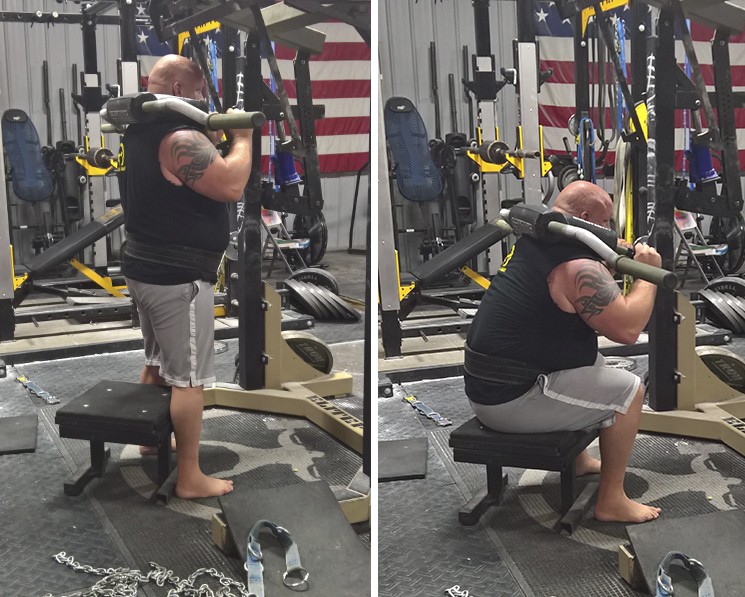
Supplemental lifts also help stabilize the builders or absorb more force. The safety bar box squat is an example as it forces you to keep your back tight in the squat. Remember, you must first be able to stabilize force and then absorb force before you can produce force. Don’t always think your weak point is due to the “produce force” part -- many times this isn’t the case.
Supplemental lifts may not be as important as builders in that they don’t correlate as strongly to performance in the main lift. But they greatly support and strengthen the builders, and can pay huge dividends when attacked with logic and purpose.
The next question that comes up is how do I train these supplemental lifts?
This may be the biggest question in the history of training. These questions usually go like this: “Hey, my deadlift gets stuck right about knee level. What exercise should I do and for how many sets and reps?” Many will tell you to just pull more deads and that will fix the problem, and in many cases this is true. That’s always an option worth looking into. I think the answer is simple and depends on your total volume of training the lift over the course of a month. Even advanced guys will begin to “economize” their training too much and when looking back will see they’re now doing 20-30% less work reps than they were when they were making gains.
The majority I’ve worked with, this usually isn’t the problem. They need to begin training their supplemental work with better planning than just saying “lets do this for a couple triples.” Keep in mind that this work will fall in the 3-6 rep range or under 30 seconds per set; most I’d say will fall under 15-20 seconds. First, note that most supplemental movements are what I’d call “movement-based” not “muscle-based.” This means the exercise and way it’s trained is based around strengthening the movement pattern of the main lift -- the builder. This isn’t about how the muscle “feels” or getting a pump. This is about strength, period.
Here are some methods and ideas on how to train supplemental movements:
Restricted Range: Movements such as board presses, high-box squats, and close-grip overhead pin presses fall into this category. These are best-trained over 3-4 week periods with reps in the 3-6 range. When you can no longer progress in weight or reps change the movement, grip, or range of motion.
Eccentrics: For strength development, eccentrics aren’t what you’d expect. Maximal eccentrics should be done at a tempo equal to or greater than your normal rep speed. The best way I’ve found to incorporate the eccentric method is by adding bands to any special exercise you’d use to help strengthen your main lift. The bands provide accelerated eccentrics. Again I’d suggest 3-4 week periods in the 3-6 rep range before changing movements, band tension, etc. This will typically be combined with other methods such as restricted range training. In fact, most of these methods become more effective when combined with others.
Concentric Only: These are movements such as suspended squats, suspended good mornings, pin presses, pin pulls, or any other movement where the eccentric portion of the lift can be eliminated or reduced by dropping or lowering the weight with little muscle tension.
From my experience, these movements are best trained in the 1-3 rep-range with no more than 4-6 total reps over the 90% range or 10 total reps in the 80% range. These are good movements to slip into your training when you think you’ll need a break or de-load. While they’re brutal and can make you feel like you got run over by a truck, you can recover pretty fast from them because of the limited eccentric contraction.
Cheating: While I’m not fan of this one, everything has it’s place and time. Some examples include taking a set of triceps extensions to failure and then knocking off a couple extra reps using more of a JM press style. I wouldn’t use this for sets under 10 reps.
Static/Dynamic: This method is great for developing starting strength. The box squat is a great example. Some others would be to perform other supplemental movements the same way such as floor presses, dumbbell floor presses, even leg presses. For this method, I’d keep the reps in the main strength range of 3-6 for cycle rotations of 3-5 weeks before changing.
NOTE: I’m listing the cycle rotations unless it’s a straight max effort movement (or testing your 1-rep max). I do not feel changing your supplemental movements every training session/week is ideal. You need to allow your body to grow and adapt to the movement, especially if the movement was selected to help develop or reinforce the technique of the competitive list.
For supplemental lifts, 3-6 weeks seems to be the point when you’ll no longer be able to progress in weight, reps, or sets. In time, you’ll find this to be fairly consistent and will know to change a week before you die out in the movement.
Bands and Chains: Much has already been written about the benefits of chains and bands.
The important thing to know is there’s a difference between the two -- the simplest way to explain this is that the chains absorb into the floor while the bands absorb into you. The bands offer accelerated eccentrics, as the bands are trying to push you into the ground faster than the chains would. This is the nature of elastics. Both can be used with almost all supplemental exercises. Some great examples are floor presses with chains, box squats with bands, board presses with bands, and deadlifts against bands. The bands can also be used in a reverse or suspended fashion where they make the bottom end of the movement less and help with acceleration on the concentric phase.
Isometrics/Static Isos: There are many ways of performing these and as many instances when you’d use them. The depth of application ranges from the first phases of physical therapy to blowing out blood vessels in your eyes. For this article, let’s assume it will be used with a supplement movement. Here, application movements such as pressing, squatting, and pulling into pins for 3-6 seconds would be recommended. I’ve also had luck using this method followed by a couple full-range reps. As noted, this is better left for another article.
Compensatory Acceleration Training (CAT): There is a big difference between training a “movement” and a “muscle.” I don’t see much reason to use CAT training for muscular development, but for increasing strength of a movement it’s one of the best (if not the best) way to do so.
If you’re a strength athlete and your goal is to get stronger, then you should be moving all main lifts and supplemental lifts with as much force as you can (after being warmed up). Don’t be that dipshit tossing around the bar 1000 miles an hour! When the weight gets in the 30-40% range then start picking up the force you apply to the bar. This also assumes you’re not trading speed for technique. Only move the bar as fast as your best technique will allow. It’s always better to do it right than fast. To do it fast and right is the golden ticket.
Change Warm-up Strategy: While not exactly a method of training, this is a very simple change that I’ve seen make an immediate difference in lifting technique and strength. There’s a school of thought that says the least you have to do before getting to your work sets, the better. This way you don’t wear yourself out before the sets start to matter. The issue I often see when I review lifters’ training videos is that their work sets get better with each set. The first set looks bad while the last set (say the third or fourth) looks really good.
In almost every case, when I ask what their warm-up sets look like I see something like this:
135 x 10 for 2-3 sets
185 x 5
225 x 5
275 x 5, 5, 5
So, while they have 20 warm-up sets, they only have three “first rep” sets. In powerlifting, the rep that means the most is the first one. In this lifter’s entire training session he has 8 “first reps” -- and out of all of them I’d wager the only set that looked solid was the last one or two -- so 75% of all the sets reinforced bad technique. This wasn’t a good warm-up if the only good set was the last one.
This would look better:
Bar for 2-3 sets x 5 reps
95 for a couple sets x 3-5 reps
115 x 5 reps
135 x 5 reps
185 x 5 reps
205 x 3 reps
225 x 3 reps
245 x 3 reps
275 for 3 sets x 5 reps
Now you have 11 warm-up sets (compared to 3). You also now have 14 “first reps.” In the second example, the lifter will be more primed to do the work sets than they would from the first example. This is also a way to add more volume and workload to your training sessions, thereby allowing for better conditioning.
Smaller Jumps Near Max Weights: This is something I learned from Louie Simmons. If my record for a given supplemental movement was 405 for 5 reps, I’d work up as normal but then after 365, I'd jump to 385, then 400, and then 410. This provided more work than simply jumping from 365 to 410. It also ensured I got the work in, as there was always a chance I’d miss 410. The work always came first -- gym PRs were secondary because they really didn’t mean shit.
A gym PR can simply be the difference between a good day in the gym and a bad day. They aren’t a good reflection of your training or the training process, especially with supplemental work because there are pre-fatiguing factors based on how good or bad the main movement went. Performing more work on fewer movements is always better than less work with more movements -- assuming the movements you select have the end goal correspondence you’re looking for, namely a better competitive max.
Loaded Iso-Holds (Yielding): These have their place as far as supplemental movements go, provided you exercise caution. They’re very effective for correcting body position technique at the breaking point. Simply squat, bench, or pull into the position where your technique begins to fail and have someone cue you to ensure you stay in proper position.
Naturally, your body will want to compensate to the path of least resistance, which could mean your knees falls in when you squat. By yielding and being cued to keep your knees out, you’ll develop the static strength to push through this area and not cave in.
The key is making sure you maintain technique -- as soon as it breaks down the set is over. These can be done as one set for time or for multiple rep sets with each hold being a 5-6 count. I suggest keeping the weight under 50% but not too light as you still want the break down compensation to occur.
3. Accessories
If I were to point to an area of programming that had the greatest need for attention and in turn, the greatest potential for improvement, this would be it. All too often this is treated like junk work. “Do 3 sets of 10-15 reps, or do 15 minutes of triceps and abs. What, you’re too tired? Then just skip it.”
Lifters need to start asking themselves, “Where is my weakness/where am I getting stuck?” and start finding accessory movements to address it. It may be that simple technique reinforcement is your missing accessory. For example, a guy who needs to drill his squat pattern would be better off doing squats with a broomstick for his accessory lift as opposed to leg curls. Again, you first have to identify the problems.
Maybe your problem is that you’re a skinny bastard? If that’s the case, your accessory work would be hypertrophy protocols. Now this is another area that guys mess up. If you need to add muscle, train with appropriate hypertrophy protocols -- higher rep, slow tempo, moderate intensity lifting -- none of this powerbuilding shit you see now.
Think about it. If you’re hitting a leg press as an accessory move for hypertrophy purposes, what’s going to build more muscle? A set of 6 reps with a thousand pounds where you’re almost blowing a gasket, or 20 slow, constant tension reps with 300 pounds? One approach is going to grind your joints and overtax your recuperative ability. The other is going to pump your quads full of nutrient-rich blood.
When it comes to building muscle, weight doesn’t matter -- your muscles don’t know if you’re holding 20-pound dumbbells or 100 pounds. Similarly, things like supersets, tri-sets, and other methods that extend the time under tension are extremely effective for muscle building applications. They’re joint friendly and help crank up the tension and the volume, both strong hypertrophy drivers. Bands are another effective tool for this application. If I want to develop chest mass on a lifter -- lets say to shorten the distance the bar has to travel in the bench press -- I’ll have him do sets of 20-rep banded dumbbell presses. Most lifters won’t need more than 35-pound dumbbells to get a screaming chest pump and the amount of joint wear is minimal. A hundred reps of band pushdowns every night before bed was a favorite of Louie for blowing up the triceps.
I’ll use similar methods if I feel the biceps need to be bigger to support a bigger bench press. I’ll attack the biceps with bodybuilding methods, which in turn supports a stronger bench press. This type of training also builds conditioning, something I see lacking in a lot of powerlifters. A good powerlifter needs to consider more than just his PR’s -- if you don’t have a big enough engine, namely work capacity, you won’t reach your limit strength potential.
Those who complain that doing even a few sets of leg curls before squatting “destroys” their squat -- that’s a huge red flag that your work capacity is unacceptable. A lot of lifters will drop these as a meet approaches to conserve energy or maintain focus. This is permissible if you have a good base and did your homework in the months leading up to this point but not such a great idea if your base isn’t so good.
The Big Picture
Here’s how I see it. I use the main movement as the most effective way to train the competition lift. For some, this could be using max effort and dynamic effort work (aka Westside), for others it could be block or some other type of loading for the squat, bench, and deadlift. This is the most critical aspect because without it your main lifts will not go up, plain and simple. While there are many ways to skin the cat, you still need the cat and something to skin it with.
After the main movement, you either need to work on your strengths or your weaknesses. This depends on your philosophy -- I’m not here to debate which way is better, just show that supplemental movements need to be trained regardless. These are usually trained based on movements and are trained hard and heavy. They’re designed for strength on the main lifts that directly carry over to the competitive lift.
Now we’re left with the question:
How do we build or help the supplemental lifts? Do you see a pattern? I never really gave this much thought until I got older and more beat up, and began to ask myself things like: What exactly will a lateral raise do for my bench that my bench or floor press didn’t already do? What exactly does a one-arm dumbbell extension do for my lockout that my bench and supplemental exercise didn’t already do? What exactly will seated band leg curls do for my squat and deadlift that my squat and deadlift didn’t already accomplish?
This is when I began to treat accessories different from supplemental movements. Many use these terms interchangeably but I don’t. I see supplemental exercises as those that make other movements stronger. I see accessories exercises as those that make muscles bigger, stronger, and better conditioned.
The supplemental work is about the movement.
The accessory work is about the muscle.
At this point, it became a matter of how can I train the muscle in the most effective, efficient, and economical way so not to create a worse environment to recover from but a better one? I began to ask questions like: Does it really matter how much weight is used?
If the goal is to build muscle, then why not find a way to get more out of less while saving the joints and tendons? Honestly, for most of my powerlifting career, the way I trained these movements was a waste of time. For example, there used to be a set of dumbbells that were welded together (not very well) and they rattled. We called them “the rattlers.” After I’d bench and do something like JM presses with chains off the floor, I’d head over and grab “the rattlers” and do a few sets of hammer curls, front raises, side raises, and whatever else. Then I’d bang out a few sets of face pulls and call it a day.There’s no way those dumbbells weighed more than 20 pounds and never once did I get a pump or create any type of stimulus for muscle growth. It was more like weighted, restricted-range mobility work.
Looking back, I could’ve used that time to focus on building the muscles that were under fire the most (the most prone to injury, but also the ones that do the most work with the competitive lifts). I think I shied away from it because the volume and intensity at which I trained was already bordering on insanity, and I knew enough to know that walking on the side of a cliff was already a big risk. Hanging one leg over the edge offered nothing more to gain but significantly increased the risk (hence “the rattlers”).
Now I know this to be false. The past decade of being a “pretend” bodybuilder and having to train around a litany of injuries (mostly joint-related) has taught me that you don’t need to train heavy to grow muscle. You do need to train heavy to get strong -- but this isn’t what we’re talking about with accessories. By the time you get to your accessories you’ve already done all your strength work (which, by the way, will not build much in terms of muscle size -- if this were true, the strongest would always be the biggest and we know this isn’t the case). So, knowing what I know now, I’d train my accessories using bodybuilding principles that keep the load minimal, range-of-motion full, and then train the muscle to failure and beyond. In short, finding the safest way to break down the largest amount of muscle tissue.
How-To Cycle and Train Accessory Work
Here are some ways you can cycle and train your accessory work. Keep in mind, this work will fall in the upper rep ranges (10-15) with the total time of the set lasting between 45-90 seconds. Regardless of the method used, there are a couple things that will apply to almost all of them. First, use a controlled tempo. This will not only increase the time under tension but also reduce the amount of weight used, creating less “wear and tear” on the joints and tendons.
Second, use a full range-of-motion. For the most part, powerlifting is about finding ways to increase strength in the competitive lifts and one way to do this is to shorten the path the bar has to travel. This then trickles down into many of the popular supplemental movements. However, considering accessories are about the muscle and not the movement. You’ll get more stimulation using a full range-of-motion. This will also help maintain mobility and joint stability.
When I first created this list there were over 30 methods. This article is already pushing close to 7000 words so I’ve decided to just describe the ones I’ve seen produce the greatest gains. This isn’t to say those not on the list don’t produce great results, it's just that I haven’t used them or prescribed them yet. It's possible too, that I have and the results weren’t as good as the methods listed. As with most accessories, the reps will run higher than supplemental movements and the movements can be cycled for longer durations (4-6 weeks or longer).
I do feel training accessories (with a strict form and tempo) to failure and/or beyond is important. This doesn’t mean going until you miss a repetition, but going until you know if you tried one more the odds of getting it are very low. This is true even for the methods that train past failure as I’ll note below.
Load Pyramiding: This is how most people train. They’ll select an exercise and perform a number of warm-up sets, working up to a top set of 8-10 reps. I’d be a fool to not suggest this one because it’s stood the test of time, however, I also feel this can trap a lifter into training their accessories the same way every time, and thus not changing and adapting to the training stimulus.
One example would be working up to a top set of 8 reps on the flat dumbbell press. The weight you might use would be around 70% of what you could do for eight reps if you pressed “balls out.” The difference would be slower tempo, feeling the stretch at the bottom, and flexing hard at the top of the movement. If you can use 60-70% of your best weight for 10 and fail around 8-10 reps then you’re doing this right.
Rest Pyramiding: With this method, you decrease the rest periods between sets. For example, I used to do standing band triceps extensions for two extra workouts per week. I’d do the first set to failure and then rest 60 seconds, move into the next set to failure and then rest 45 seconds. Then another set followed by 30 seconds rest and then the last set with 15 seconds rest. This flooded my triceps with blood and only took one time to get the job done.
Stripping: This is the classic bodybuilding strip-set technique. An example would be a 45-degree hyperextension with a med ball. You start off by doing as many reps as you can holding the ball, then drop the ball and continue on to failure.
Plateau Method: This is a more measured approach to training that more guys should do. Instead of working up to one balls-out set of 8 or 10 reps on an assistance exercise, do three or four sets of a slightly lower weight. So instead of one top set of eight reps of incline DB presses with 120 pounds, do four sets of eight with 100 pounds. It’s more quality volume and less strain.
Up-sets: This is the opposite of strip-sets. This technique is best suited for machine or plate-loaded exercises, like the leg press. Start off by doing 5-6 plates a side and do eight reps. Then, without resting, have a partner add a plate and do another eight reps. Keep going until eight reps is no longer possible.
Supersets/Giant Sets: Hopefully this doesn’t warrant too much of an explanation. Pairing two exercises together is a superset. I like pairing opposing bodyparts such as biceps and triceps, quads and hamstrings, etc. Tri-sets are three exercises grouped together, and a giant set is more than three. Once you get beyond a superset, there’s very little strength application. It really just becomes a time saving measure. If you’re going to do this, perform your main lift and builder lift as programmed and then group your accessories together as a giant set.For example, lat pulldowns to pulldown abs to hammer curls to reverse hypers. Again, this is to save time while getting in the work more than anything else.
Progressive Segments: This is partial range work – a perfect example is 21’s, the classic bodybuilding partial range movement. For our purposes, this works really well with JM Presses and one-arm DB triceps extensions. The key is to work slow and focus again on the muscle, not the movement.
Double Sets: This is a really effective technique I’d like to see more guys doing. It works really well with unilateral movements, using a one-arm DB triceps extension as an example. Do a set for the left arm and stop one rep shy of failure, then do a similar set for the right. Keep going back and forth until you can’t even do a rep. I also like this method with standing leg curls.
Pre-Exhaustion: Putting an isolation movement before a compound exercise. This is a great hypertrophy method. Louie always had me do rope pushdowns right before JM Presses and my triceps would almost explode.
Reps to Failure: I define failure as when technique breaks down, not absolute, total failure. In other words, there should still be one possible rep left in the can. The more advanced the trainee, the longer he can withstand fatigue before reaching this point.
Strict Sets: These are sets performed with perfect form; slow tempo, strong contraction, and deep stretch. A perfect example is a flat DB press for the chest. Use a slow tempo and get a deep stretch before pressing into a full lockout. Focus on contracting the chest not the triceps. This is a great method for reaching a stubborn body part.
Tempo Changes: Here you start the set with a slow, controlled tempo and then gradually get more explosive as you warm up (and fatigue). This is a great method to do with glute-ham raises, and also a much safer way to do them.
Rest-Pause at Contraction: Performing a set and then resting for 10 seconds at the point of contraction. This is not fun. An example would be calf raises – do a set of 10 reps, hold a 10-second contraction, do another 10 reps, hold a 10-second contraction, and then a final 10 reps. Three sets of that and you won’t enjoy walking up stairs the next day.
Rest-Pause at Stretch: Similar to the above exercise, except you rest at the point of the stretch. This can be dangerous so you have to be selective with what movements you use. I like to do it with ab work on an ab Mat – 15-20 crunches, rest 10 seconds at the stretch, finish the set to failure.
Partial Reps: This is performing a full-range set near failure, and then continuing to do partial reps to extend the set. I like this with reverse hypers, just coming out of the bottom position for a few extra reps at the end of a set.
Alternative Method: This is a cool method that can only be performed with a handful of exercises. A favorite is using it with dumbbell shoulder presses. To do, extend one dumbbell to full lockout overhead and hold it there while performing reps with the other dumbbell. An excellent technique to forge a mind-muscle connection.
Movement Moderation: One of the biggest mistakes I made in my career is not using this technique more. Every subtle change you do to a movement – even narrowing your grip by a finger width – makes a huge difference in terms of joint wear and tear. So this technique would be never using the exact same hand position or grip width twice in the same exercise. Every set would be slightly different. An example would be a 14-inch close-grip bench to a 13-inch.
4. Rehab/Prehab
This is a frustrating category. If you read too much online, you may be convinced that you need 30 minutes of pre-hab type stuff before you even grab a barbell. This is a big mistake. Not only is it unnecessary, it will only teach you to hate lifting. My rule for this stuff is simple. It has to be stuff that you know you need to be doing. So, if a qualified therapist says you must work on your shoulder mobility, then those are the drills you need to be doing. But there can be nothing half-assed. Pick one or two moves that you absolutely must do and hit them with purposeful intensity. Anything else can bring more harm than good.
To Sum Up
1. Always start with the builders. Do not start with the main lift.
Examples: Floor press, box squat. Sets: 3-5. Reps: 3-5.
2. Move to supplemental exercises — exercises that build the builders.
Examples: 2-board press, safety-bar close-stance squat. Sets: 3. Reps: 5-8.
3. Accessories — Either muscle-based (for size) or movement-based (for strength). Use supersets and tri-sets, as needed.
Examples: DB presses, biceps curls. Sets: 3. Reps: 10-20.
4. Rehab/Pre-hab — Whatever you need, nothing more or less.
Examples: External rotation, face pulls. Sets: 2-3. Reps: 20-30.
If I were I to emphasize anything in particular in this article, it would be the difference between training the muscle and training the movement. Both methods have merits but are very much context dependent. In other words, which method you choose depends on the goal of the exercise. For example, a DB row to support a stronger bench (a movement) would be a Kroc row as it mimics the bench press movement almost perfectly. Just focus on pulling hard, heavy, and explosively. On the other hand, a DB row to support a bigger, rounder chest would be a strict DB row -- full extension at the bottom, pause, and drive the elbow up as high as possible.
Wrap Up
Some might say that this is an excessively analytical approach, that anything beyond the main lifts and the builders is basically interchangeable. I’ve heard this criticism many times, and it’s always from lifters who, in my opinion, never reach their true potential. Let's face it, this “analytical” approach is how all high-level sports are performed. It’s like writing a book: you start with a basic story idea, add the characters, create an outline, then plan the individual chapters with dialogue. Last is the grammar and spelling, and while this may seem like a trivial step, if the grammar is all wrong, the whole book won’t work. No one will be able to read it, and as such, the entire project is lost.
You can always just wing it or do what you always did. You can program the hell out of your main lifts using every last periodization scheme from the Eastern bloc. You can continue to do “whatever” for the accessories. And you might make gains and get strong, and maybe even become elite.









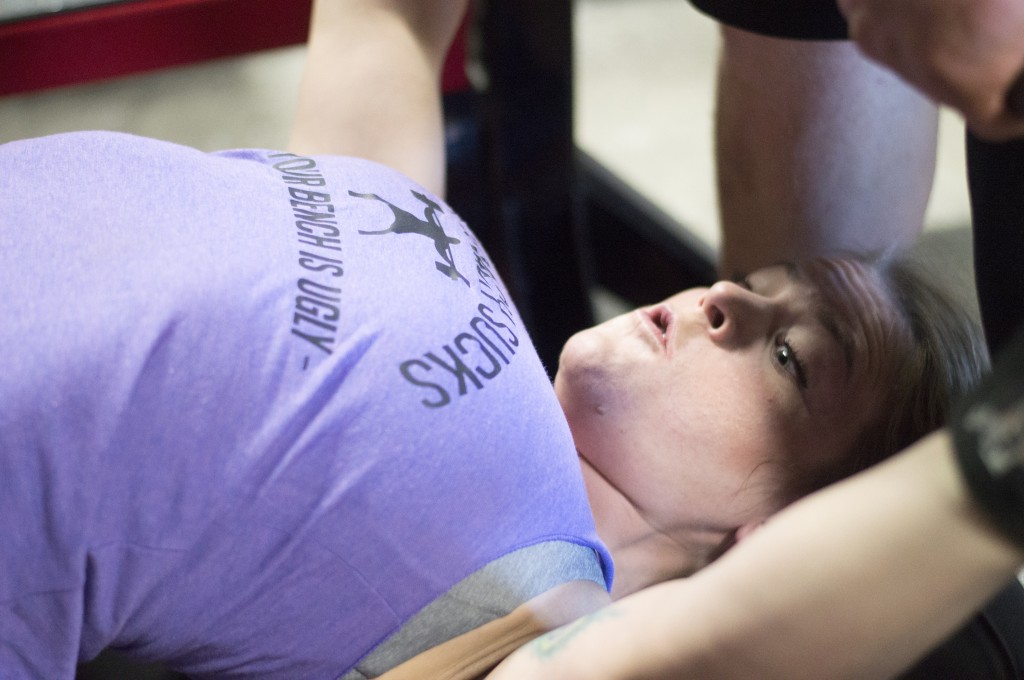
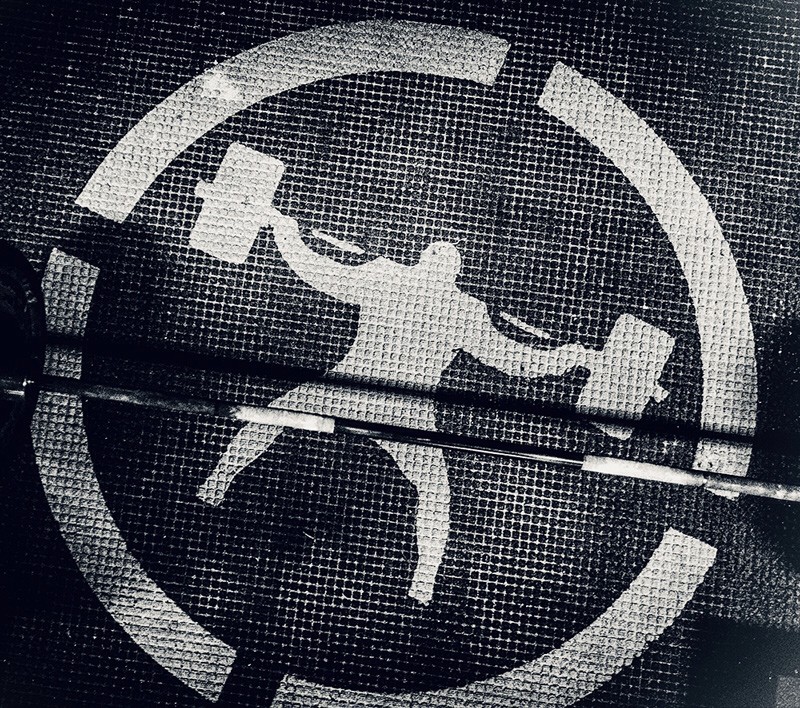
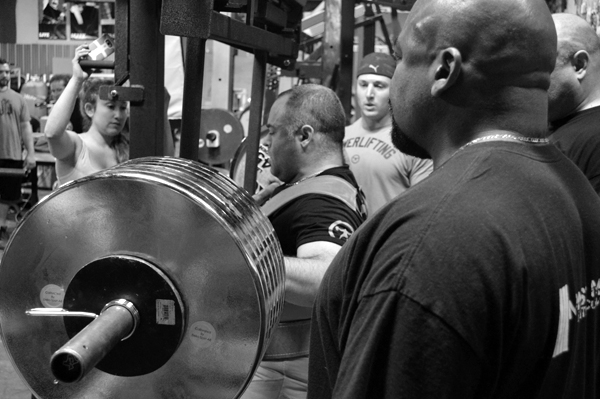
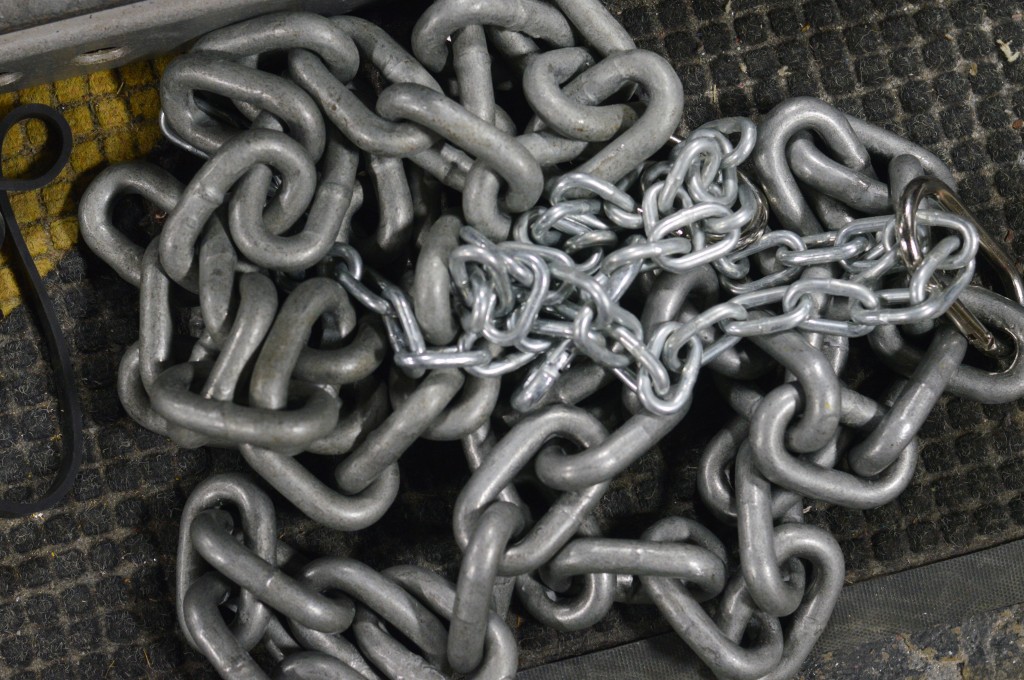
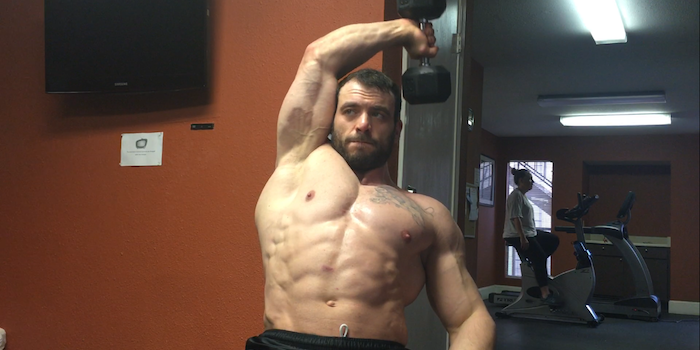
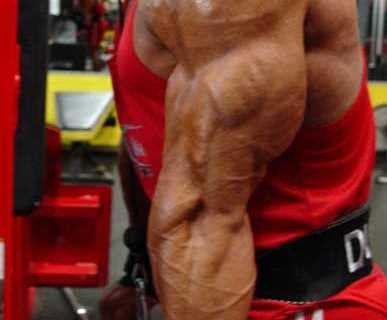
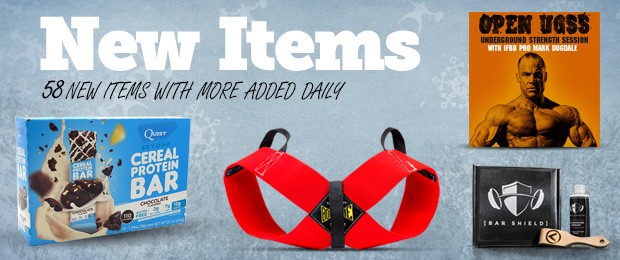
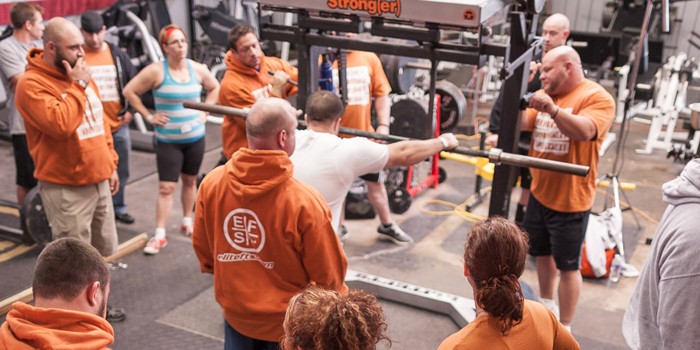
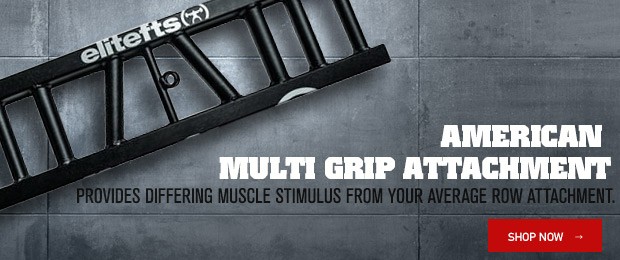
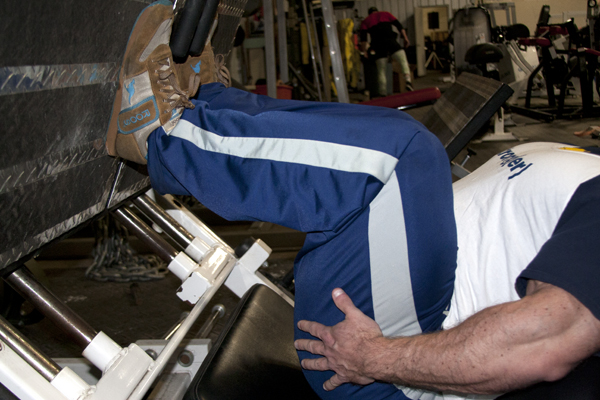
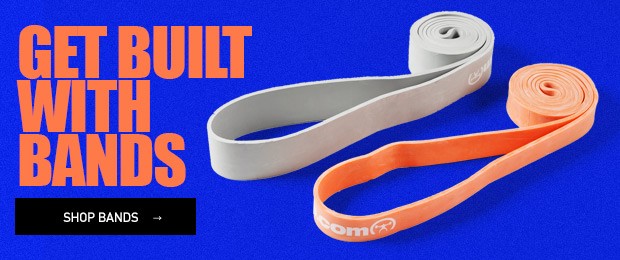
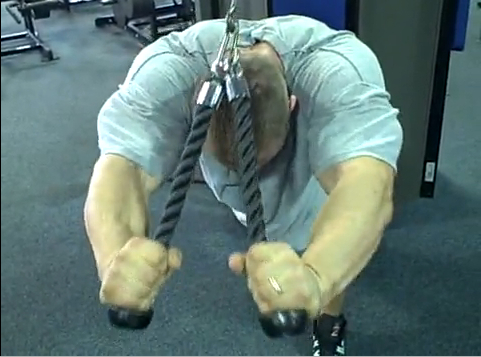
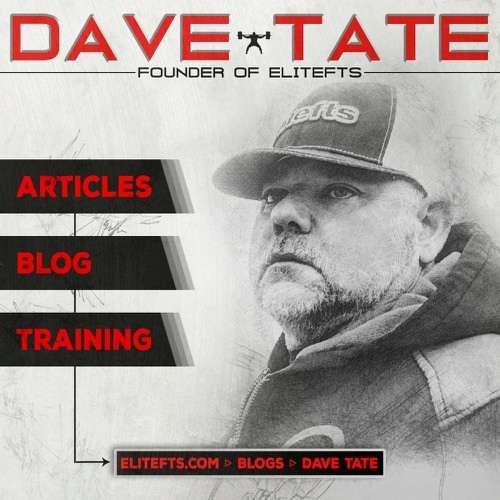
5 Comments